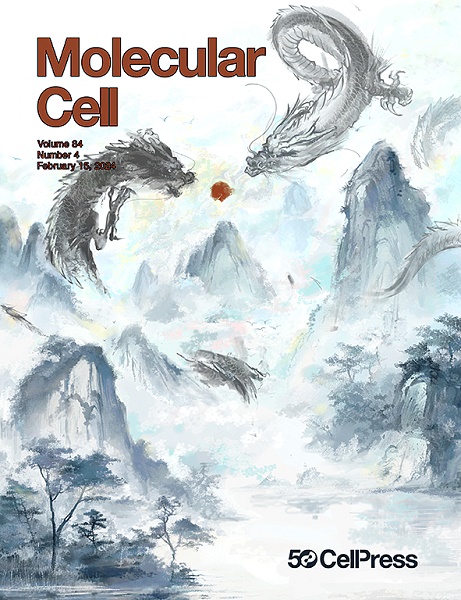The SWI/SNF PBAF complex facilitates REST occupancy at repressive chromatin
IF 14.5
1区 生物学
Q1 BIOCHEMISTRY & MOLECULAR BIOLOGY
引用次数: 0
Abstract
SWI/SNF (switch/sucrose non-fermentable) chromatin remodelers possess unique functionalities difficult to dissect. Distinct cancers harbor mutations in specific subunits, such as the polybromo-associated BAF (PBAF)-specific component ARID2 in melanoma. Here, we perform epigenomic profiling of SWI/SNF complexes and their associated chromatin states in melanocytes and melanoma. Time-resolved approaches reveal that PBAF regions are generally less sensitive to ATPase inhibition than BAF sites. We further uncover a subset of PBAF-exclusive regions within Polycomb-repressed chromatin that are enriched for REST (RE1 silencing transcription factor), a transcription factor that represses neuronal genes. In turn, PBAF complex disruption via ARID2 loss hinders REST’s ability to bind and inactivate its targets, leading to upregulation of synaptic transcripts. Remarkably, this gene signature is conserved in melanoma patients with ARID2 mutations and correlates with an expression program enriched in melanoma brain metastases. Overall, we demonstrate a unique role for PBAF in generating accessibility for a silencing transcription factor at repressed chromatin, with important implications for disease.

求助全文
约1分钟内获得全文
求助全文
来源期刊

Molecular Cell
生物-生化与分子生物学
CiteScore
26.00
自引率
3.80%
发文量
389
审稿时长
1 months
期刊介绍:
Molecular Cell is a companion to Cell, the leading journal of biology and the highest-impact journal in the world. Launched in December 1997 and published monthly. Molecular Cell is dedicated to publishing cutting-edge research in molecular biology, focusing on fundamental cellular processes. The journal encompasses a wide range of topics, including DNA replication, recombination, and repair; Chromatin biology and genome organization; Transcription; RNA processing and decay; Non-coding RNA function; Translation; Protein folding, modification, and quality control; Signal transduction pathways; Cell cycle and checkpoints; Cell death; Autophagy; Metabolism.
 求助内容:
求助内容: 应助结果提醒方式:
应助结果提醒方式:


